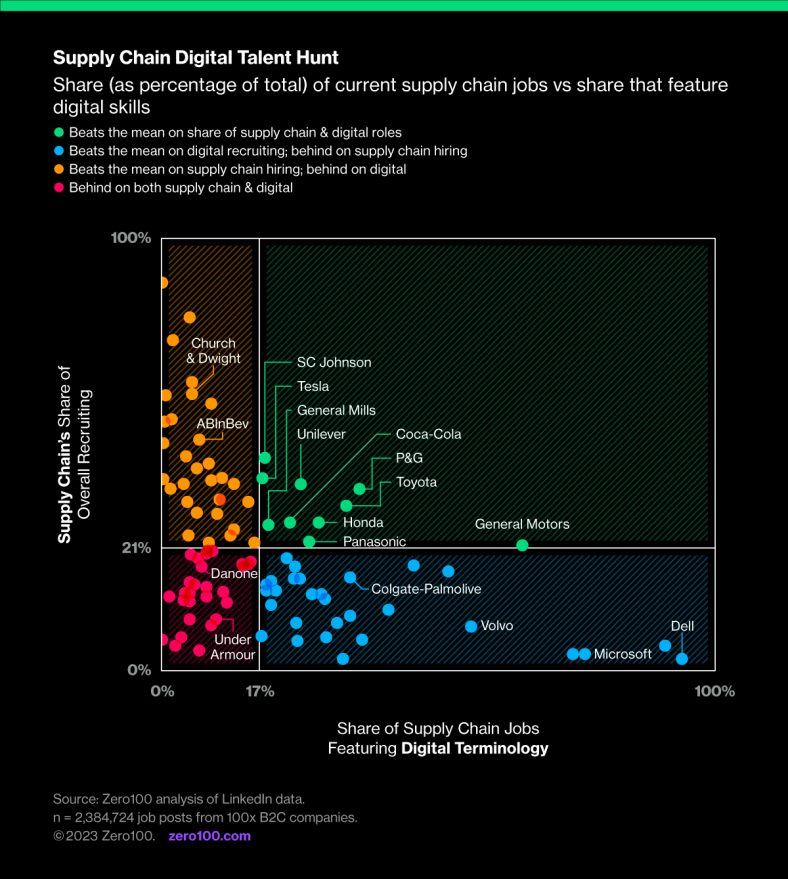
Key Headlines
-
1
A quarter of the jobs recruited for via LinkedIn at the 100 largest B2C companies are supply chain, manufacturing, and procurement jobs.
-
2
Only 12% of all job posts feature core digital skills like artificial intelligence, machine learning, blockchain, and automation; this drops to 5% for supply chain specific recruiting.
-
3
The auto industry leads on automation with consumer packaged goods (CPG) companies, led by P&G, just trailing.
-
4
This data complements our Rewired 2030 study (available to Zero100 members), which shows that companies that lead on talent are five times more likely to run 100% digital supply chains than talent laggards.
New Zero100 data shows that talent is your best path to building digital supply chains.
We reviewed a year’s worth of job posts from 100 B2C companies – 2.4 million total – and some things surprised us, some didn’t.
Let’s start with what we expected.
Analytics and automation are the most common digital skills for supply chain jobs, yet only represent 2.9% and 1.3% of these jobs, respectively. Given the complex manufacturing processes in the industry, auto companies lead on automation hiring.
Over the last year, General Motors (GM) advertised almost five times the industry average for automation jobs and over three times for robotics. Two thirds of these come from the primary GM account, with the rest from Cruise, GM’s self-driving vehicle division. To support these more functional skills, GM has also been building its software engineering teams, with a new head recently poached from Apple, at twice the rate of its auto peers.
Now, to the less expected.
Consumer packaged goods (CPG) is the second-ranked industry when it comes to automation recruiting. P&G is the outright leader here – nearly one in five of their supply chain jobs feature automation skills. Job descriptions are packed with specifics on the skills required and the technologies being used to drive supply chain digital transformation. P&G’s automation hotspots are in the USA, Germany, Mexico, and France.
Unilever also stands out in automation but with a point of differentiation in how much they feature digital twin capabilities – they have a third of the industry’s jobs in this virtual space.
Across the 100 companies we reviewed, a whopping quarter of all corporate jobs are supply chain roles. Of these supply chain jobs, only 5% overall feature digital skills.
We mapped companies on two vectors: the share of all recruiting specific to supply chain vs the share of supply chain roles that feature digital skills (see below for methodology description). We’ve plotted companies against the mean for each vector (21% and 17%, respectively), resulting in the scatter plot below. The visualization demonstrates the lead both auto and CPG have on other industries, while revealing some of the leaders we mention in this article. Only a handful beat the mean on supply chain and digital skills recruiting.

Initially, we looked at the share of supply chain jobs as part of a company’s hiring strategy. Over time, this highlights which companies are growing – or contracting – their supply chain functions. CPG companies have a healthy share of supply chain jobs relative to all jobs. Church & Dwight is hiring across its end-to-end supply chain with roles in manufacturing, sourcing, engineering, management, IT, finance, quality assurance, planning, and strategy.
Digital skills are the other side of the supply chain talent market. We identified the most critical digital skills – including software engineering, analytics, and artificial intelligence – to scan which companies focus on building capable digital teams. Unsurprisingly, the technology industry leads here with Dell, Alphabet, and Microsoft as the stars – over half their supply chain job posts require digital skills.
So how should you redress this imbalance? Leaders who outperform the mean:
- Define the supply chain roles of the future for your teams. One of the biggest demands of the entry-level and early career supply chain workforce is to understand what the future holds. What does their role look like in 2030? Zero100’s analysis highlights how leaders are describing the talent and skills required to drive digital transformation. Companies like P&G and Unilever have gone as far as to create lists of future skills (like storytelling, negotiations, and data science) with clear definitions that are then circulated across the organization. Painting a clear picture of the future will help assuage fears of digital transformation while providing your people with a future-ready development path.
- Work back from your digital roadmap to establish the top skills needed to drive transformation. This detail extends to establishing a list of terminology that should appear in recruiting efforts across all supply chain functions. For example, as part of implementing its logistics and warehouse automation strategy, Walgreens recruited for demand planning, capacity planning, and assortment optimization, as well as the robotics and automation expertise needed to execute the work.
- Partner with your leadership and management teams and with HR business partners to manage recruiting efforts with an “SEO-mindset” (i.e., leveraging the art and science of making internet content findable and featured). This mindset will drive your team to think of the talent pool as customers and work back from making your company and job postings as easy to find as possible for candidates. Leaders like SC Johnson are doing this in a coordinated and systematic way by creating standards for job titles, listings, and career portal search features.
Zero100 Methodology
Zero100’s proprietary data and analytics are a combined effort between our data scientists and research analysts. We provide data-first insights matched with our own research-backed points of view and bring this analysis to life via real-world case examples being led by supply chain practitioners today.
For this study, we looked at 2.4 million job posts from 100 B2C companies. We broke this down across seven industries to see where there is concentrated hiring for supply chain roles and which individual companies appear to be increasing or decreasing their recruiting relative to other teams or functions. To determine which companies are outperforming peers on both digital and supply chain roles, we analyzed the share of current supply chain job posts vs those that contain specific digital terminology in their descriptions. Companies appear where they outperform or underperform the mean for each axis.
